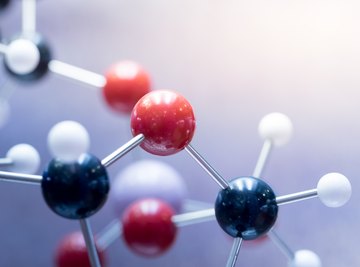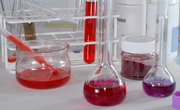
In chemistry, a homologous series is a group of compounds that share the same basic chemical makeup, but differ in the number of iterations of a certain aspect of their structure. Homologous series are referenced frequently in organic chemistry, where compounds can differ by the length of their carbon chain. These differences can have an effect on the physical properties of the chemicals, such as boiling point.
Repeating Unit
The defining characteristic of a homologous series is a repeating unit. For example, the alkane group contains the CH2 repeating unit. This means that the compounds are identical with the exception of the number of CH2 units in the compound. Organic compounds also have functional groups, which define the basic properties of the compound. All of the compounds in a homologous series have the same functional group, with differing numbers of repeating units.
Homologation Reaction
A homologation reaction is a reaction in which the number of repeating groups of a compound is increased. As a result, the compound becomes a different member of its homologous series. For example, the Ardnt-Eistert homologation process is used to increase the number of repeating units in a carboxylic acid. In this case, the process involves a number of different reactions that reconfigure and rearrange the atoms in the molecule.
The Alkane Series
The alkane series is an organic homologous series consisting of repeating CH2 units. Each alkane has two hydrogen atoms in addition to its CH2 units. For example, the first alkane is methane, which has a formula of CH4. The second alkane is ethane, which has two carbon atoms. Therefore, it has a formula of C2H6; it has two CH2 groups and two additional hydrogen atoms.
Boiling Point
The boiling point of the compounds in a homologous series increases as more units are added. This occurs because the surface area of the compound increases when the length of the compound does. The functional group of a compound defines its initial boiling point. Then, as the homologous series lengthens, the boiling point gets slightly higher with each successive increase in repeating unit.
References
About the Author
Serm Murmson is a writer, thinker, musician and many other things. He has a bachelor's degree in anthropology from the University of Chicago. His concerns include such things as categories, language, descriptions, representation, criticism and labor. He has been writing professionally since 2008.
